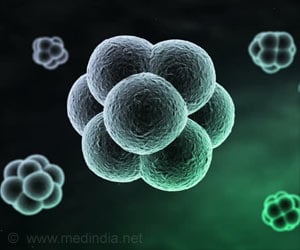How did life on Earth originate? Discovery of DNA components in meteorites shows that it might have started from space.
- Rocks from space that crushed Earth last century contained five basic components of DNA
- These five components are nucleobases, which create the genetic code of all life on Earth
- With this discovery, scientists think that origin of life on Earth came from outer space
Identifying the wide diversity of extraterrestrial purine and pyrimidine nucleobases in carbonaceous meteorites
Go to source) .
Read More..
Did Meteorites Bring the Building Blocks of Life To Earth?
Exactly how life on Earth originated is the focus of ongoing research across many disciplines. During the formation of Earth, many common elements and compounds would not have been present. Still, people believe that many of these, such as water, were delivered afterward by meteorites, which may have also delivered organic molecules.All these speculations came to an end by using new techniques of chemical analysis. These techniques helped Japanese researchers to demonstrate that components necessary to form DNA and RNA, the genetic basis of life can be found in small meteorites that fall on Earth (2✔ ✔Trusted Source
Scientist discover all ingredients necessary for DNA in meteorite for first time
Go to source).
“The absolute abundance of nucleobases of extra-terrestrial origin could be enough for further chemical reactions on the early Earth,” said lead author Prof. Yasuhiro Obaat Hokkaido University, Japan.
These DNA components are not just examples of extra-terrestrial life, instead they occur as a result of chemistry taking place on rocky objects in space called asteroids. Later, they may have fallen on Earth to provide the raw material for the origin of life.
The idea that genetic material could form on asteroids suggests that DNA components are all over the place, which has a lot of implications when it comes to considering the potential distribution of life on other planets.
Conditions Needed for the Origin of Life
There are different theories regarding the conditions needed for life to form on Earth. One of the most famous hypotheses suggests that intense ultraviolet radiation and lightning provide the energy for chemical reactions between compounds to begin on early Earth.These reactions then led to the creation of molecules such as DNA and RNA, which would ultimately become life. Experiments have confirmed that this theory might work.
However, there are some gaps between the conditions simulated in these experiments and what we now understand about the early evolution of Earth’s atmosphere. The challenges led scientists to look elsewhere for how the earliest molecules formed.
Other theories include reactions involving ice and glaciers, radioactive beaches, and meteorites bringing these materials to Earth. The latter is already known to have played a crucial part in the formation of life by delivering most of the planet’s water (3✔ ✔Trusted Source
Meteorites could have brought all 5 genetic 'letters' of DNA to early Earth
Go to source).
Meteorites also contain a variety of other organic molecules. The recent occurrence of DNA molecules in meteorites gets around some of the issues of them forming on Earth, as the delivery of these initial building blocks is essential for life to start.
DNA Precursors Found in the Meteorites
The new study was conducted in collaboration between the Japanese and American scientists to study three carbonaceous meteorites which fell in Murchison, Australia; Lake Murray, USA; and Tagish Lake, Canada.Samples were taken from these meteorites and ground into a fine powder, allowing the organic components of each meteorite to be extracted.
All five nucleobases, which make up DNA and RNA, were detected in the meteorites at concentrations similar to experiments replicating the conditions of the early universe (3✔ ✔Trusted Source
Meteorites could have brought all 5 genetic 'letters' of DNA to early Earth
Go to source) .
Researchers also ruled out that these compounds were the result of contamination after the meteorites landed on Earth, as the concentrations were different from the soil found in the areas they landed.
The typical DNA precursors for the biological formation were also mostly absent, suggesting the molecules formed in a way unlike those on Earth.
What’s Next?
The next step is to analyze samples of asteroids that may have been similar to the parent bodies of these meteorites, potentially allowing the researchers to confirm their findings.Previous research has already detected organic molecules on Itokawa, a siliceous asteroid, while the asteroids Ryugu and Bennu are expected to be analyzed in the coming years. This study adds evidence to the presence of nucleobases on other asteroid types (4✔ ✔Trusted Source
Meteorites could have brought DNA precursors to Earth
Go to source).
As nucleobases were found in this meteorite as well, it could be that these molecules are common across the Solar System, as these meteorites and their parent asteroids come from very different places.
NASA’s next mission hopes to visit eight asteroids in the coming decade, allowing scientists to discover even more about how these bodies contributed to the formation of the entire Solar System.
References:
- Identifying the wide diversity of extraterrestrial purine and pyrimidine nucleobases in carbonaceous meteorites - (https://www.nature.com/articles/s41467-022-29612-x)
- Scientist discover all ingredients necessary for DNA in meteorite for first time - (https://www.independent.co.uk/space/dna-meteorites-origins-life-b2065837.html)
- Meteorites could have brought all 5 genetic ’letters’ of DNA to early Earth - (https://www.space.com/meteorites-brought-dna-blocks-to-early-earth)
- Meteorites could have brought DNA precursors to Earth - (https://www.nhm.ac.uk/discover/news/2022/april/meteorites-could-have-brought-dna-precursors-earth.html)
Source-Medindia










